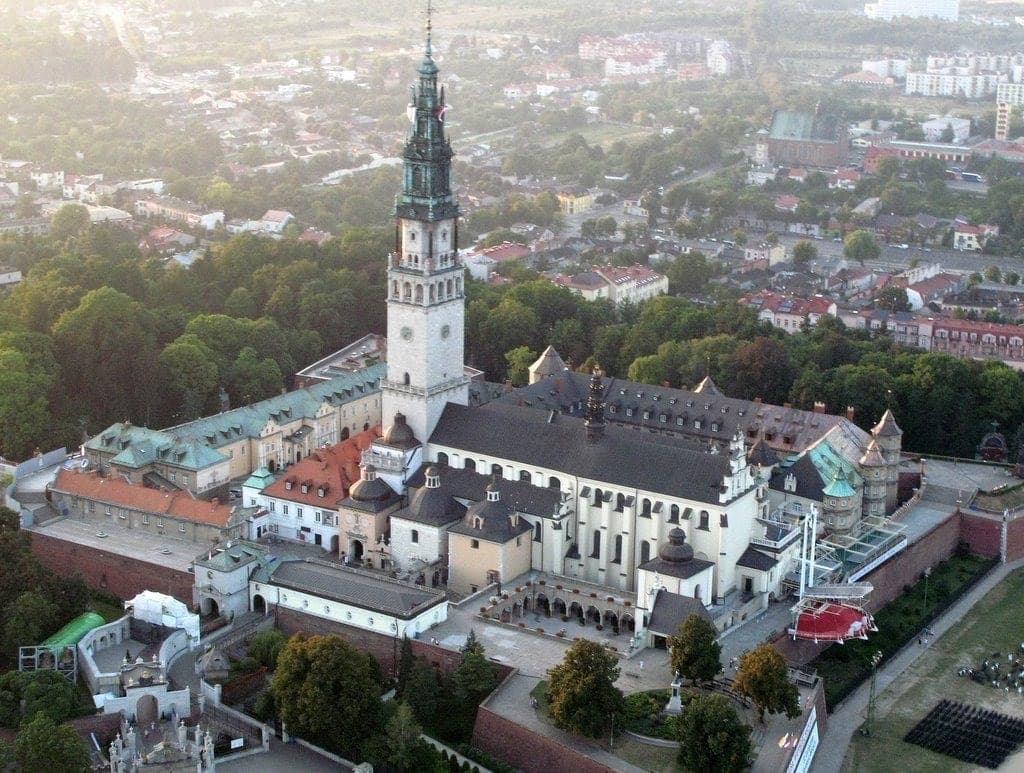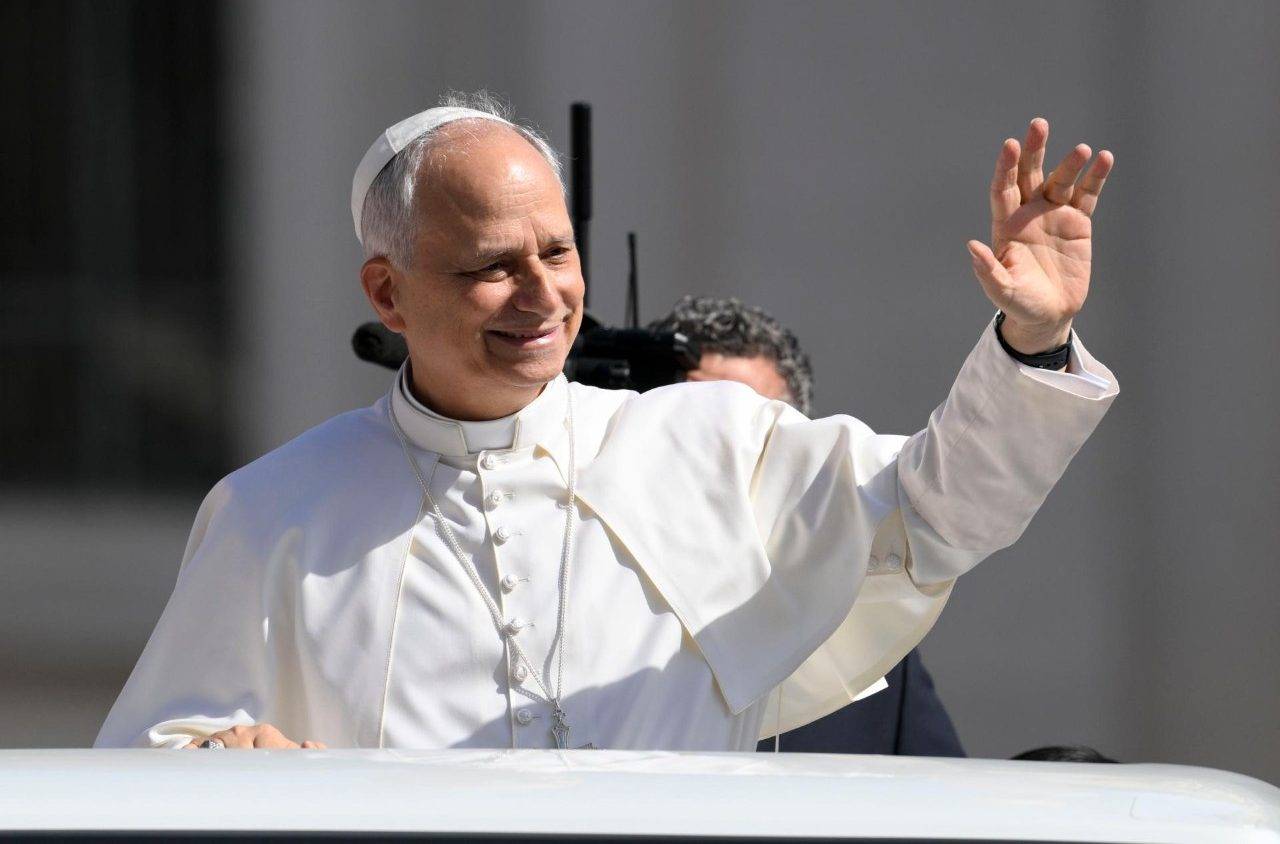KRAKOW, Poland– In journalism school, one is taught that the opening paragraph of a new story should contain all the essentials: Who, what, where, when, and how. In any given story, however, one of those elements is often more important than the others.
Thursday with Pope Francis in Poland was one of those days when the “where” clearly looms largest.
The pontiff opens his first full day in the country with a visit to the storied Jasna Góra Monastery (which is Polish for “luminous mount”), which houses the revered icon of the Black Madonna of Częstochowa, and it’s simply impossible to imagine anything this Argentine pope might do that says more clearly, “I get Poland.”
Francis is to celebrate a Mass at Częstochowa, located about 90 miles north of Krakow, marking the 1050th anniversary of the “baptism” of Poland, meaning the arrival of the faith in the country. As is customary for popes, he’ll also present a golden rose statue to the Madonna.
Granted, there’s nothing terribly surprising about Francis wishing to pray at the country’s most important Marian shrine. As is well known, like any Latin America pastor worth his salt, Francis has a powerful devotion to the Blessed Mother.
The pontiff begins all his foreign journeys with a brief stop at Rome’s Basilica of St. Mary Major to invoke her protection on the outing, and typically visits a Marian sanctuary or shrine everywhere he goes.
Granted, too, there’s nothing unusual about a pope visiting Poland making a stop at Jasna Góra, as both St. John Paul II and Benedict did so as well. Indeed, John Paul was in Częstochowa 25 years ago for a World Youth Day, only the third outside Rome and the first time youth from the former Soviet sphere were able to take part.
Indeed, probably the only surprise would have been if Francis had not included a stop at Jasna Góra on his itinerary. (In fact, the pope’s original hope had been to chopper out to Jasna Góra, pray in front of the Black Madonna, and then leave without making a speech or staging any major public event. In the end, he was persuaded to lead a Mass for the baptism anniversary, in which some 200,000 people are expected to take part.)
Still, there are three reasons why the “where” in this case matters for this pope.
First, it’s a way for Francis to connect on an emotional level with his Polish hosts, making the point that despite the fact that he comes “from the end of the earth,” he actually has much in common with Poles, especially an ardent Marian devotion and a strong sense of popular faith.
In other words, Jasna Góra in Polish eyes sort of stamps the pope’s spiritual passport.
Second, it’s a clear statement of respect for his predecessor, John Paul II, whose image is ubiquitous during this World Youth Day, and whose legacy is still keenly felt here and throughout the Catholic Church.
Writing recently in the Catholic Herald, Father Raymond D’Souza suggested that the Poland trip offers Francis a chance to heal a “rift” with the most devoted followers of John Paul II, many of whom, D’Souza suggests, were left cold by the way Francis handled the canonization of John Paul (bundling it with Pope John XXIII and offering a rather flat and pro-forma homily.)
Compounding the problem, D’Souza suggests, is the perception that Pope Francis’s recent document on the family, Amoris Laetitia, in some fashion breaks with John Paul’s treatments of the same issues, especially in the 1981 text Familiaris Consortio.
While the depth of that rift may be debatable, the tension is real, adding an internal ecclesiastical dimension to the statement made by the visit. In a recent Crux interview, John Paul biographer George Weigel described the stop as a “great sign of continuity” between the two pontiffs.
Among other things, John Paul’s personal devotion to Our Lady of Częstochowa is the stuff of legend; it was before this Madonna that a young Karol Wojtyla whispered “Totus Tuus,” meaning “all yours,” which would become his papal motto. During the years of struggle with the country’s Communist regime, John Paul II would frequently invoke the protection of Our Lady of Częstochowa.
Third, the Jasna Góra visit also gives Francis an opportunity to reach “across the aisle,” to use political argot, meaning to find common ground with more conservative believers who are sometimes his fiercest critics.
In the Polish mind, nothing says tradition like Jasna Góra. It was here in 1655 that a determined band of monks staved off the forces of an invading Lutheran king from Sweden, supposedly responding to one of his surrender demands by saying, “It is better to die worthily than to live impiously.”
Basically, the monks of Jasna Góra have been fighting for the faith ever since.
The sanctuary is seen as a temple both to Polish nationalism and to deeply traditional Catholic piety, and thus Francis is showing his reverence for a spot, and a legacy, that generally is most cherished by believers who would conventionally be seen as fairly “conservative.”
In sum, Francis is making a statement about Poland, about John Paul II, and about the Church’s left/right divide with his visit to Jasna Góra – and that, by the way, is all before he even says a word.















